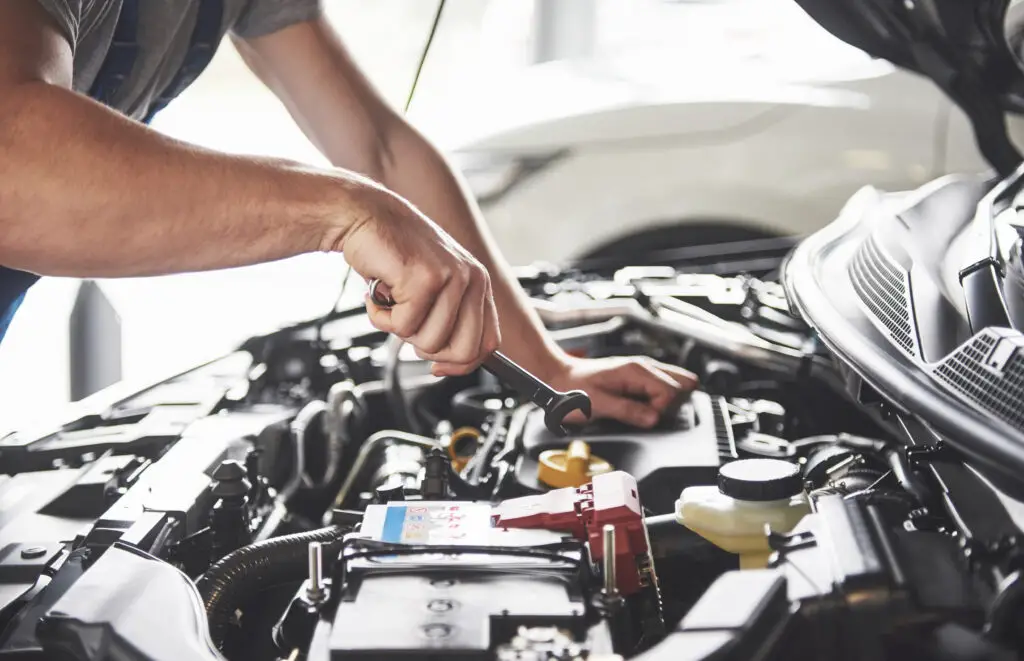Looking for how to jumpstart a car by yourself in 7 easy steps? It can be frustrating to find yourself with a dead car battery, especially when you’re in a rush. But the good news is that you can often jumpstart your car by yourself if you have the right tools and follow the proper steps. In this guide, we’ll walk you through how to safely and effectively jumpstart a car on your own.
What You’ll Need
Before attempting to jumpstart your car, gather these essential items:
- A pair of jumper cables
- A functioning car with a charged battery (if available) or a portable jump starter.
- Protective gloves and goggles (optional, but recommended).
Safety Note: Always read your car manual before jumpstarting, as some vehicles have specific procedures.
Step-by-Step Guide to Jumpstarting a Car
1. Ensure Safety First
Before you start, ensure you are in a safe location. Avoid busy roads and ensure both vehicles (or your vehicle and the portable jump starter) are turned off.
- Engage the parking brakes on both vehicles.
- Keep any metal objects, loose clothing, and jewelry away from the battery terminals.
2. Locate the Batteries
Open the hoods of both vehicles and locate the batteries. Identify the positive (+) and negative (-) terminals on each battery.
Tip: If using a portable jump starter, locate the battery connections and follow the manufacturer’s instructions.
3. Connect the Jumper Cables
Follow these steps carefully to connect the jumper cables:
- Red Cable to Dead Battery (+): Attach one red clamp to the positive terminal of the dead battery.
- Red Cable to Charged Battery (+): Connect the other red clamp to the positive terminal of the charged battery (or the positive port on your jump starter).
- Black Cable to Charged Battery (-): Attach one black clamp to the negative terminal of the charged battery (or the negative port on the jump starter).
- Black Cable to Ground: Connect the other black clamp to an unpainted metal surface on the engine block or chassis of the car with the dead battery. This minimizes the risk of sparks near the battery.
4. Start the Engine
- If using another car, start the engine of the functioning car and let it run for a few minutes to transfer some charge to the dead battery.
- If using a jump starter, turn it on and follow its specific instructions.

5. Start the Dead Car
Attempt to start the car with the dead battery. If it doesn’t start immediately, wait a couple of minutes and try again. Avoid cranking the engine continuously for more than 10 seconds to prevent damage.
6. Disconnect the Jumper Cables
Once the car starts, carefully disconnect the cables in reverse order:
- Remove the black clamp from the ground of the previously dead car.
- Remove the black clamp from the negative terminal of the charged battery (or jump starter).
- Remove the red clamp from the charged battery (or jump starter).
- Finally, remove the red clamp from the positive terminal of the previously dead battery.
7. Let the Engine Run
Let the jumpstarted car run for at least 20–30 minutes to recharge the battery. If possible, take it for a drive to help the alternator fully charge the battery.
What If It Doesn’t Work?
If the car still doesn’t start after several attempts, you may be dealing with a deeper issue, such as:
- A severely damaged battery that needs replacement.
- Faulty starter or alternator.
- Loose or corroded battery terminals.
In such cases, contact a mechanic or roadside assistance for further help.
Additional Tips for Jumpstarting
- Keep a set of jumper cables or a portable jump starter in your car at all times.
- Inspect your battery regularly for corrosion or loose connections.
- Avoid jumpstarting if you notice physical damage to the battery, such as cracks or leaks.
Final Thoughts
Learning how to jumpstart a car by yourself is an invaluable skill that can save you time and frustration as a driver, car owner or passenger. By following these steps and practicing safety precautions, you’ll be back on the road in no time. To avoid frequent battery issues, ensure regular battery maintenance and keep emergency tools handy.
Discover more from Chikwem
Subscribe to get the latest posts sent to your email.